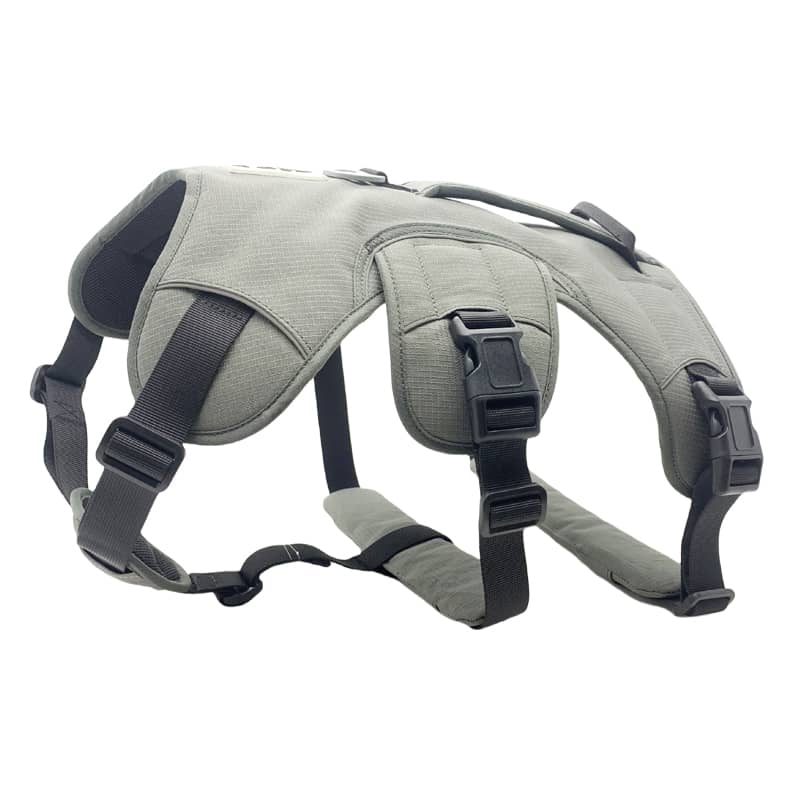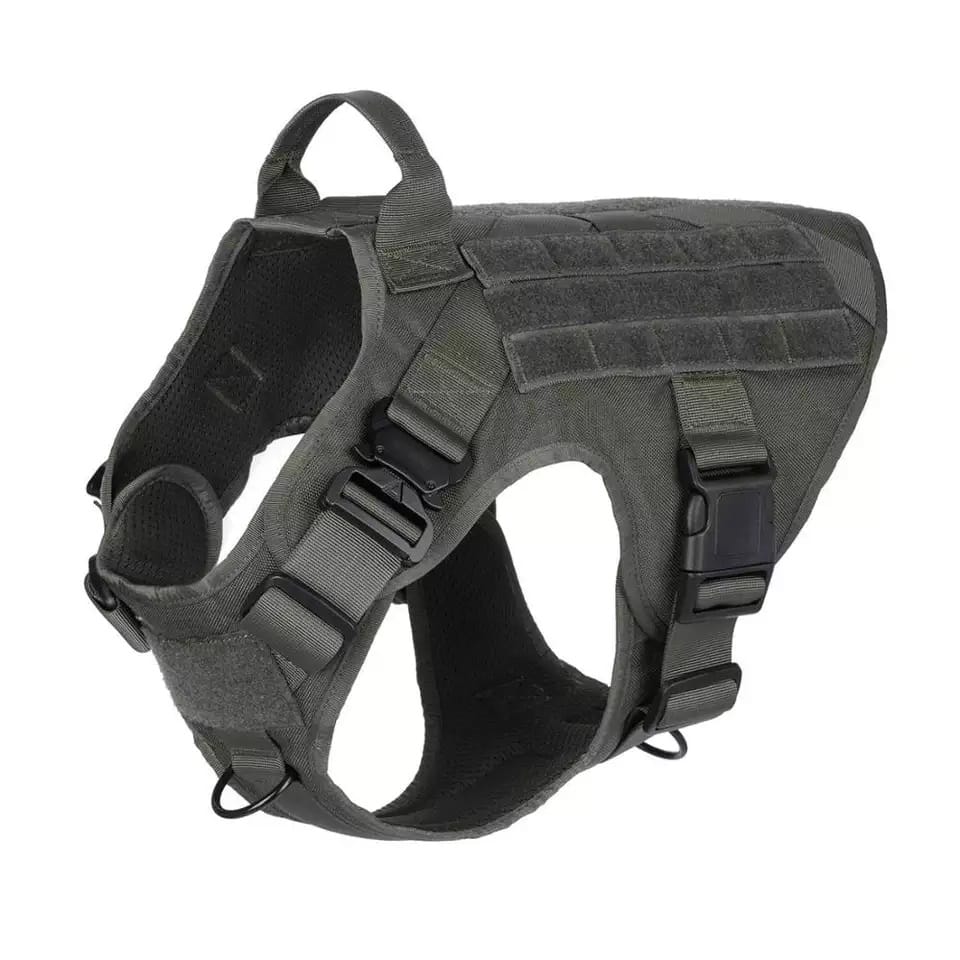
This article, brought to you by Jessica at Bestone Inc., a trusted name in pet product manufacturing, dives into the world of safety standards for pet harnesses and leashes. If you’re an international buyer, understanding these rules is like having a map to sell your products worldwide. Safety standards make sure harnesses and leashes keep pets safe—whether they’re walking down the street or riding in a car. We’ll cover everything from strength tests to chemical rules and certifications, breaking it all down so it’s easy to grasp. Let’s start with a quick snapshot of the key points.
| Topic | Key Info | Region |
|---|---|---|
| Safety Standards | REACH (chemicals), GPSD (safety), Prop 65 (warnings) | EU, UK, USA |
| Tensile Strength | Must withstand 7x pet’s weight | Global |
| Certifications | CE (EU), UKCA (UK), CPS (USA, voluntary) | EU, UK, USA |
| Chemical Safety | No harmful substances like lead or phthalates | EU (REACH), USA (Prop 65) |
| Future Trends | ASTM standards, eco-friendly materials | Global |
Introduction to Safety Standards for Pet Harnesses and Leashes
Why Safety Standards Matter
Safety standards are like the rulebook for making sure pet harnesses and leashes do their job. Imagine a dog pulling hard on a leash or riding in a car during a sudden stop—a weak harness could break, putting the pet in danger. These standards stop that from happening. They also help businesses sell their products legally in places like the EU, UK, and USA. Without them, you might face fines or have your products banned.
How Standards Build Trust
When a harness meets safety rules, customers trust it more. For example, a harness that passes crash tests in the USA is a big deal—people know it’s safe for car rides. In the EU, a CE mark on a product means it’s good to go. This trust turns into sales, especially for international buyers who want reliable gear. Learn more about choosing safe options in our guide to harness safety.
The Global Picture
Every country has its own safety rules, which can feel like a puzzle. The EU cares a lot about chemicals, the USA focuses on crash safety, and the UK has its own post-Brexit standards. Understanding these differences is key to getting your products on shelves worldwide. This article will walk you through each part, step by step, so you’re ready to tackle any market.
Understanding Tensile Strength Testing
What Is Tensile Strength Testing?
Tensile strength testing checks how strong a harness or leash is. It’s like a tug-of-war game—how much pulling can it take before it snaps? This matters because a weak harness might fail when a dog pulls hard, leaving them loose in a busy street or park.
Types of Tests
There are two big tests to know:
- Static Testing: This pulls the harness slowly until it breaks. Most harnesses need to hold at least seven times a pet’s weight. So, a 20-pound dog needs a harness that can take 140 pounds of force!
- Dynamic Testing: This mimics a car crash. It tests if the harness can handle a sudden jolt, like when a car stops fast. Check out our guide to car harnesses for more on this.
Why It’s Important
A strong harness keeps pets safe in tough situations. In a car, an untested harness might not hold up, turning a pet into a danger for everyone. Typical harnesses can handle 190–270 kg in tensile tests and up to 170 kg in crash tests, according to industry data.
“Tensile tests measure the force required to break a sample specimen and determine elongation to that breaking point, providing crucial data for design and quality control.” —Intertek
Chemical Safety Regulations: REACH and Prop 65
What Are Chemical Safety Rules?
Chemical safety rules make sure pet products don’t have bad stuff—like toxic chemicals—that could hurt pets or people. Countries set these rules to keep everyone safe.
REACH in the EU
In the EU, REACH is the big one. It bans over 2,000 chemicals, like lead and phthalates, which can be in fabrics or hardware. If your harness has these, it’s a no-go for Europe. Testing labs check every part to make sure it’s clean.
Prop 65 in California
In the USA, California’s Prop 65 is super strict. It lists over 1,000 chemicals, and if your product has any—like certain dyes—you need a warning label. For example, lead limits are 0.5 µg/day in California, way lower than the EU’s 10 µg/day.
According to industry insights, “Chemical safety compliance in the EU requires adherence to REACH, which restricts hazardous substances in materials. In California/USA, Prop 65 warnings may be required if certain chemicals are present.” This shows how tricky it can be to sell in both places.
Certifications Required in the EU, UK, and USA
EU Certifications
In the EU, you might need a CE mark if your harness has tech like lights or GPS. REACH compliance is also a must for chemical safety. These stamps prove your product meets tough rules.
UK Certifications
Post-Brexit, the UK uses UKCA marks instead of CE for some products. If a harness is for travel, an Animal Health Certificate might come into play too. It’s all about keeping pets safe across borders.
USA Certifications
In the USA, things like CPSIA apply to kid-related products, but Prop 65 warnings are key in California. The Center for Pet Safety (CPS) certification is voluntary but gold for crash-tested harnesses. Want to know more? See our ultimate harness guide.
Why Certifications Matter
Certifications open doors to markets and build buyer confidence. They’re proof your product isn’t just talk—it’s tested and safe.
How to Ensure Compliance with International Standards
Step 1: Know the Rules
First, figure out what each country wants. The EU’s REACH is about chemicals, while the USA’s CPS focuses on crashes. Research is your starting line.
Step 2: Design Smart
Make harnesses with safe materials—like non-toxic fabrics—and strong parts. Avoid weak spots that could fail under pressure.
Step 3: Test Everything
Use labs to run tensile, crash, and chemical tests. In the EU and UK, even metal clips get a salt-spray test to check rust resistance.
Insight: “In the EU/UK, metallic hardware is also subjected to corrosion resistance (salt-spray) testing to ensure durability under environmental exposure.” This extra step keeps products tough in rain or snow.
Step 4: Get Certified
Grab the right certifications—CE, UKCA, or CPS—based on your market. Keep all your test reports handy to show you’re legit.
Discover Your Reliable Manufacturing Partner
Bestone has 16 years of experience in dog products R&D and export, boasting SGS/TUV/CE‑certified quality control, eco‑friendly factory, and 40–60% cost savings. Partner with you to elevate your brand’s pet‑product line seamlessly.

Common Mistakes to Avoid in Harness and Leash Testing
Skipping Crash Tests
Some companies skip crash tests and call their harnesses “safe.” Big mistake! In 2013, CPS found most car harnesses failed their tests.
Ignoring Chemicals
Not checking for harmful chemicals can get you in hot water. A product with banned substances might get pulled from stores—or worse, fined.
Bad Sizing or Design
A harness that’s too big or made with cheap stitching can slip off or break. Size it right and use strong materials—check our measuring guide for tips.
Lying About Tests
Saying “crash-tested” without proof is a fast way to lose trust. Be honest, or buyers will catch on.
Case Studies or Examples of Compliance
Sleepypod’s Success
Sleepypod’s Clickit Utility Harness aced CPS crash tests in 2013. It’s a star example of doing it right—safe and trusted.
Coastal Pet’s Strength
Coastal Pet tests their harnesses to hold seven times a pet’s weight. That’s strength you can count on for any dog.
Ruffwear and Kurgo
Ruffwear’s Load Up Harness and Kurgo’s Tru-Fit both pass FMVSS 213 crash tests at 30 mph. They balance safety and comfort perfectly. Curious about brands? See our Ruffwear vs. Hurtta comparison.
Insight: “In the USA, crashworthiness for pet harnesses is often evaluated using FMVSS 213 protocols adapted from child restraint systems; testing includes dynamic sled tests at ~30 mph with canine dummies.” This shows how serious safety gets.
Explore Our Full Dog Gear Product Line
From eco-friendly collars to harnesses, leashes to apparel—you get full-custom dog products with logo, color, fabric, and packaging tailored to your brand. OEM/ODM ready. Quality, delivery, scalability—Bestone delivers.

Future Trends in Safety Standards for Pet Products
New ASTM Standards
ASTM is working on global rules for pet harnesses. Soon, these might be the go-to standard everywhere.
Green Materials
Buyers love eco-friendly stuff. Future rules might push for recycled or biodegradable harnesses—check out sustainable pet trends.
Smart Tech
Harnesses with GPS or lights could face new tech safety tests. It’s the next big thing—see how AI is shaping this in our AI tech guide.
Global Rules
Countries might agree on one set of rules, making compliance easier. It’s a game-changer for international buyers.
People Also Ask: Questions and Answers
Common Questions Answered
- What are safety standards for harnesses and leashes?
They’re rules like REACH (chemicals), GPSD (safety), and Prop 65 (warnings) to keep pets safe. - How are they tested?
With tensile tests for strength, crash tests for sudden stops, and lab tests for chemicals. - What certifications do I need?
CE and REACH for EU, UKCA for UK, and Prop 65 or CPS for USA. - How do I comply?
Research rules, design safe products, test them, and get certified. - What mistakes should I avoid?
Skipping tests, ignoring chemicals, bad sizing, and fake claims. - Any success stories?
Sleepypod and Coastal Pet nailed it with top-notch testing. - What’s next for standards?
ASTM rules, green materials, and smart tech are coming.
Conclusion
Safety standards for pet harnesses and leashes aren’t just rules—they’re the backbone of keeping pets secure and businesses thriving. From tensile strength tests that prove durability to chemical checks like REACH and Prop 65, these standards ensure products are ready for the world. Certifications open markets, and avoiding mistakes keeps your reputation solid. Looking ahead, trends like ASTM standards and eco-friendly designs will shape the future.
At Bestone Inc., we’ve got 16 years of experience helping buyers meet these standards. Ready to make your pet products stand out globally? Reach out today—let’s get your business on the map!
Explore some top-notch harnesses:

Multi-piece Style Harness

No-visible Stitching Harness

Tactical Harness
Want to dig deeper? Here are some helpful resources:
- ASTM International – Learn about upcoming standards.
- Center for Pet Safety – Crash test info.
- SGS Testing Labs – Global testing services.


